It’s important to incorporate daily exercises for hypermobility. These should be daily exercises in a controlled way that cover several of the essential muscle groups.
While you can do more, start with getting good control of these muscles. These exercises require minimal equipment and allow you to focus on finding the right muscles and getting them working.
Read on to learn more about essential exercises for hypermobility.
- Roll-ins and roll-outs
- Bridge with control
- Core muscle activation
- Squats
- 12 things to remember – general guidelines for strengthening
- Your homework
Exercises for Hypermobility #1: Roll-ins and roll-outs
These exercises work well together and activate the muscles of the hip that help to stabilize the pelvis position and are necessary for walking and support the pelvic floor. These muscles are often weak in people with hypermobility.

The “Roll-In” Setup:
Begin by sitting up tall with both feet flat on the floor and a ball (small) or firm pillow between your knees. (decorative couch cushions work well for this)
Movement: Gently squeeze both legs inward against the ball. Hold 5 seconds, then relax and repeat.
Tips:
- Make sure not to arch your back during this exercise, keep your back in the same position.
- Make sure you are using the muscles on the inside of your thighs and hips.
- Don’t push with your feet, and think about rotating your hips in toward each other.
Muscle to use: Inner thighs
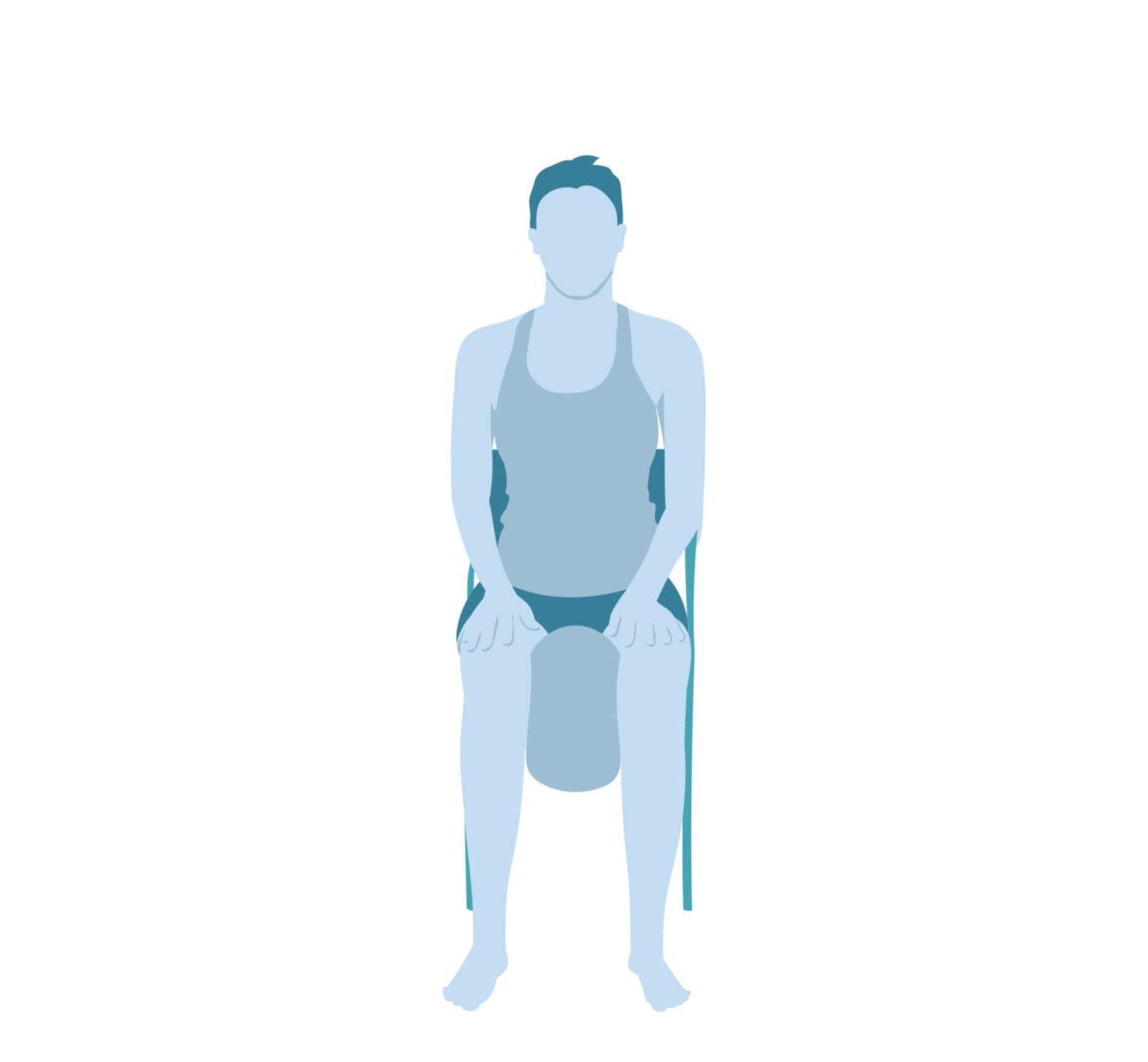
The “Roll-Out” Setup:
Begin by sitting up tall with a resistance loop around your knees and your feet on the ground with your knees at a 90-degree angle.
Movement: Pull your legs outward against the resistance using your outside hip muscles, then staying controlled, allow them to come back together and repeat.
Tips:
- Make sure to keep your movements slow and controlled, and continue breathing evenly during the exercise.
- Make sure you don’t use your feet to push out, and you only are using your outer hip muscles and not your inner thigh muscles.
- Don’t let your back move while your hips are moving; keep it in the same position.
- The pelvis tends to want to rock forward, arching your back. Don’t let it.
Muscle to use: Outside of hips/ glutes
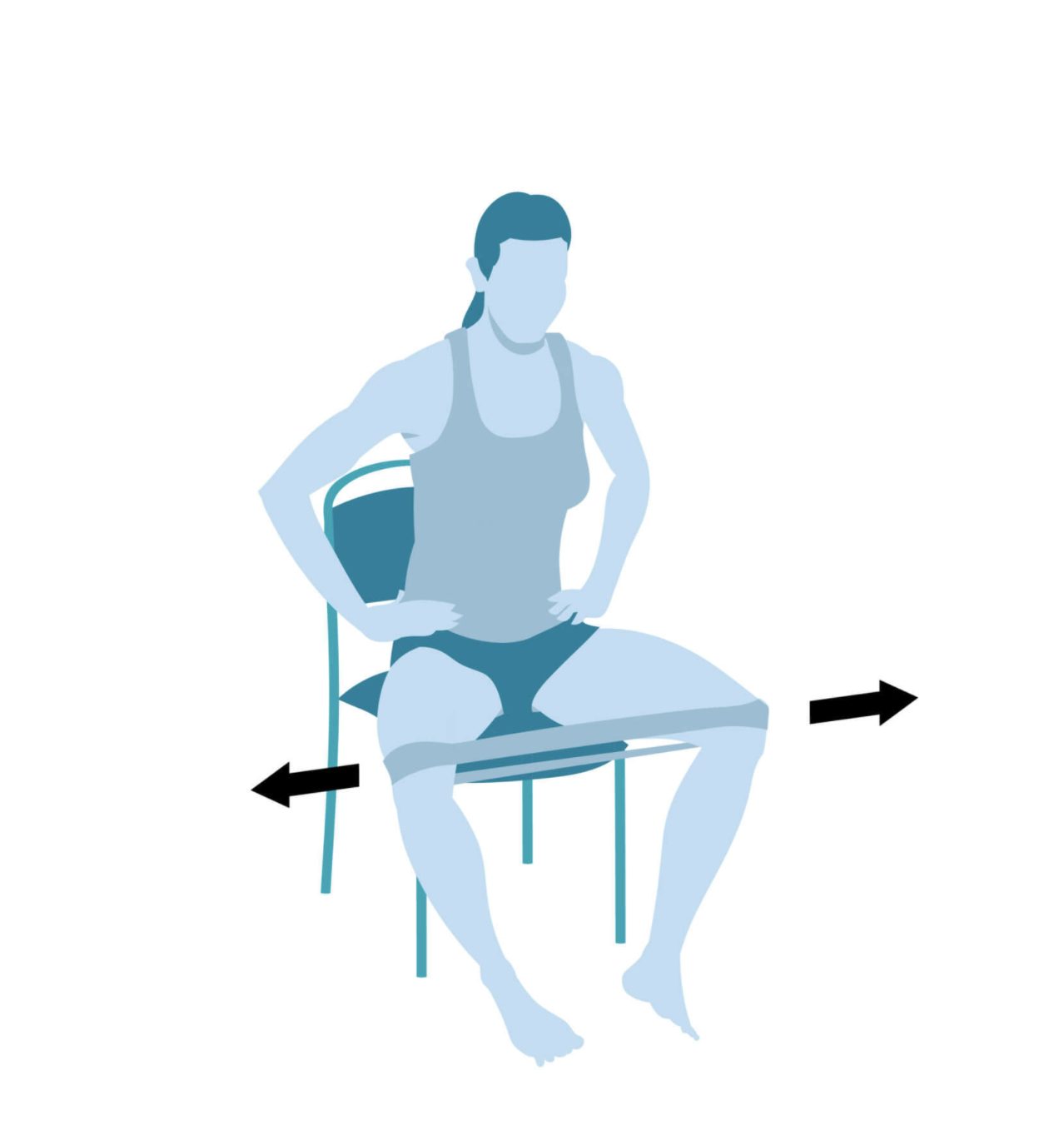
Exercises for Hypermobility #2: Bridge With Control
“Bridge With Control” Setup:
Begin lying on your back with your arms resting at your sides, your legs bent at the knees and your feet flat on the ground.
Movement: Roll your hips back flattening your low back, and slowly lift your hips off the floor into a bridge position, trying to roll up thinking of raising 1 vertebra at a time. Then slowly roll back down.
Tips:
- Keep your arms flat on the floor, move controlled.
- Focus on squeezing your glutes and use them to lift you, don’t use your back.
- If you get cramping in the back of your thighs, that means you need to use more butt muscles and less legs.
- Don’t lift higher than where your back is straight.
- Start small; don’t try to go higher. Start with just active movement moving up and down. Then work into holding for 5 seconds each.
Muscle to use: Your glutes
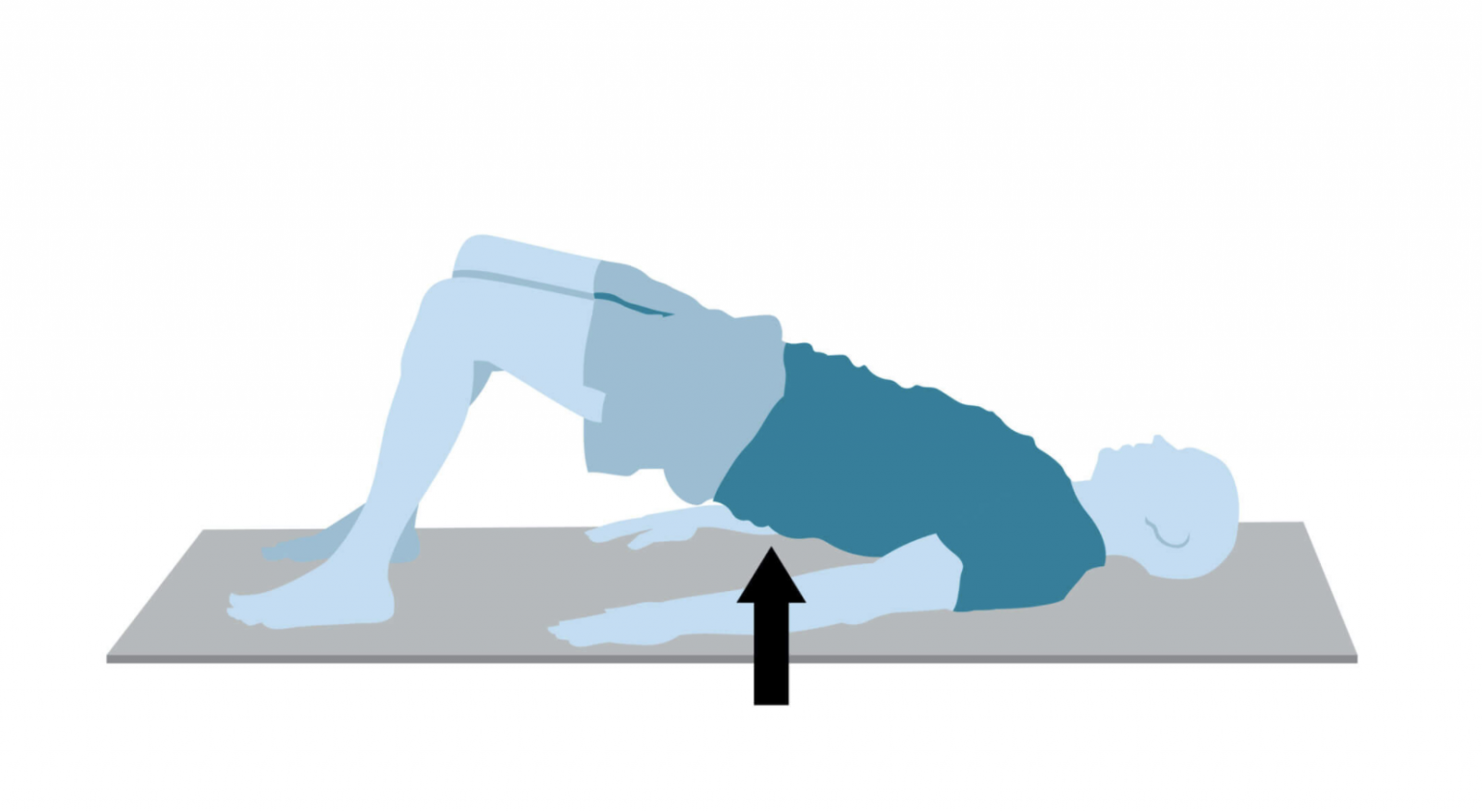
Exercises for Hypermobility #3: Core Activation
“Core Activation” Setup:
Begin lying on your back with your arms resting at your sides, your knees bent and your feet flat on the ground.
Movement: Tighten your abdominals by pulling your belly button toward your spine and lightly pressing your low back into the floor using your stomach muscles.
Hold this position and slowly raise one of your legs off the floor, keeping your knee bent and make sure that you don’t move your back. Then return to the starting position and repeat with your other leg.
Tips:
- Make sure to keep your trunk from moving during the exercise and do not let your low back arch.
- If you feel your back muscles working, you need to restart and focus on your stomach muscles.
- Try not to use your neck and keep your shoulders relaxed.
Once you have good control, move onto the core strength exercise you were able to complete with previous on your assessment. This now becomes your exercise level.
Make sure that when you do this, you are using the right muscles and supporting your back. You should have no increased pain with this exercise.
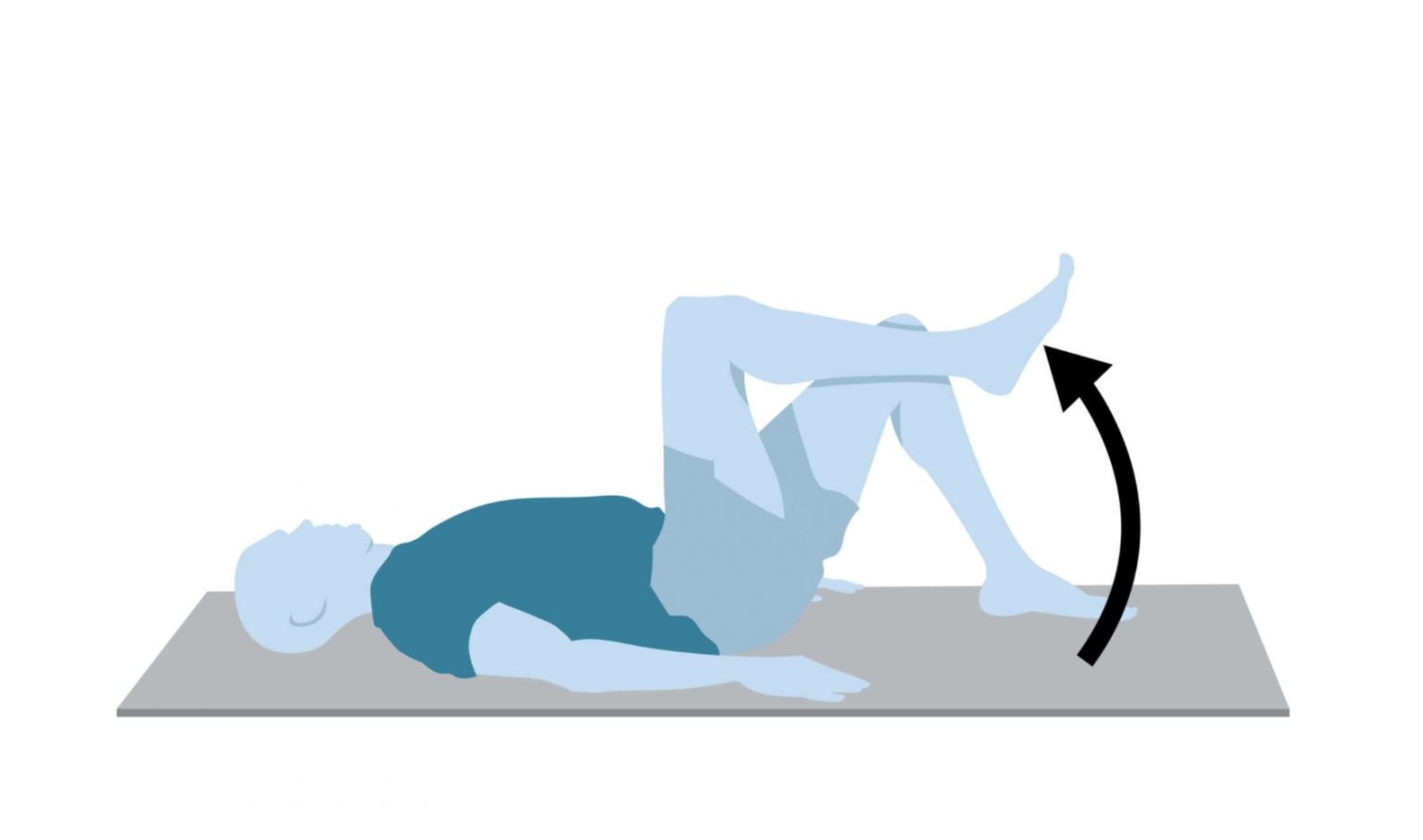
-
Exercises for Hypermobility #4: Squats
Squats are an excellent way to strengthen your legs.
Start with small ones, and don’t try to go down too low.
Focus on your mechanics bending from your hips and sticking your butt out like you are going to sit down in a chair. Then, squeeze your glutes to return to standing.
You will bend forward, but you should not feel a strain on your back.
Tips:
- Begin in an upright standing position, with your feet slightly wider than shoulder-width apart.
- Bend your knees and hips into a mini squat position, then straighten your legs and repeat.
- Make sure to keep your back straight and do not let your knees bend forward past your toes.
- Repeat 10 times
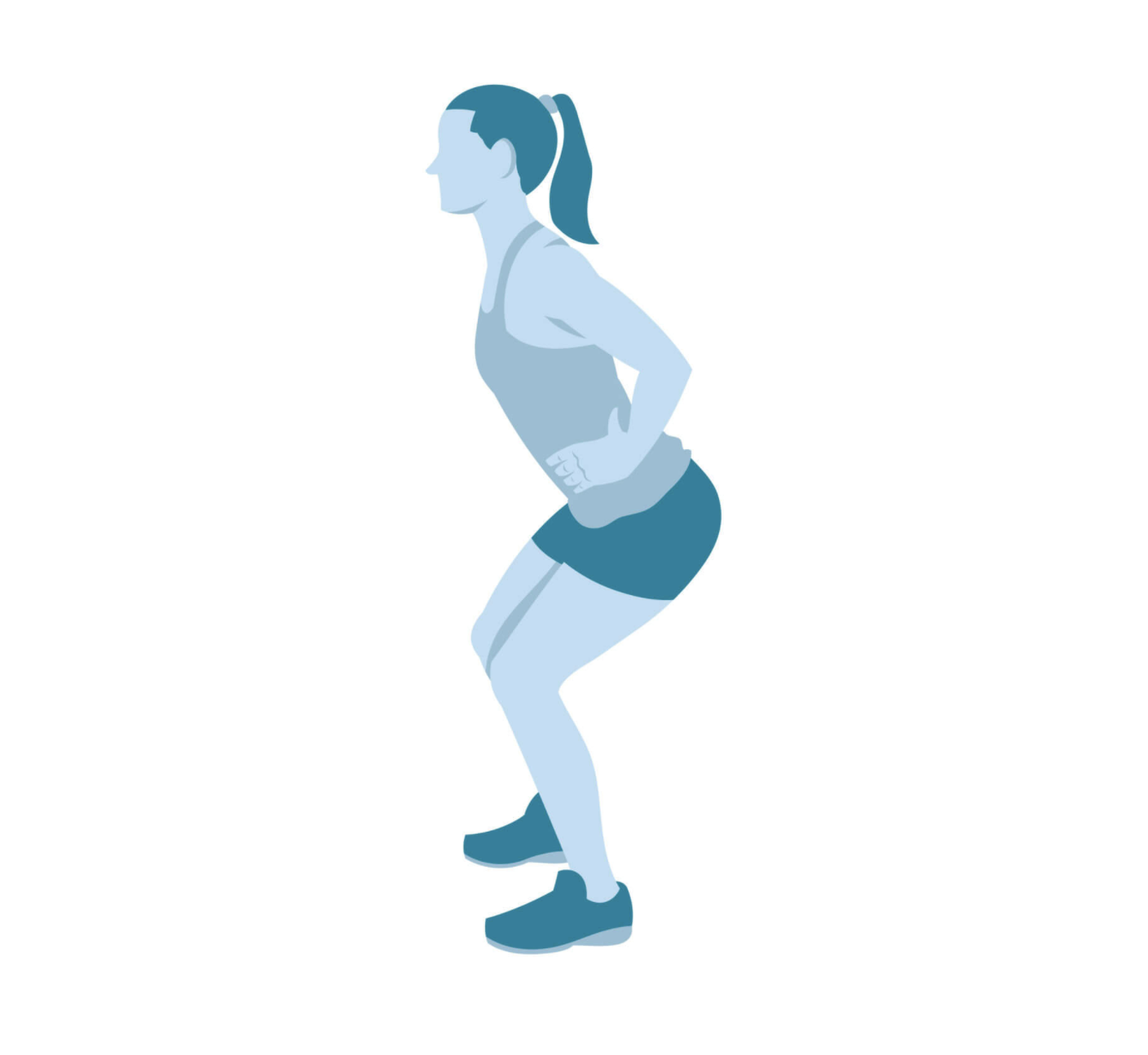
12 Things to remember – General guidelines for strengthening
- Know what you are doing or trying to do.
- Use visual feedback whenever possible.
- Start small.
- Begin with isometrically contracting the muscle, that means to tighten the muscle without going anywhere.
- Then do a small movement.
- Progress into larger movements as you can.
- Once you can complete the full movement, then add weight or resistance.
- You don’t need to start with 10 reps.
- Gradually increase your reps to 12.
- When you want to increase your weight, drop your reps to 8 with the new weight and then work back up to 12 reps.
- Do any exercise 3 separate times at a certain level before progressing up to the next one.
- Don’t go by how you feel that day, focus on being strategic and with a plan.
- Only progress in one area at a time. Never increase reps and weight on the same day; your goal is a 10% change per week of one area, not all areas.
- Try to focus on consistency rather than progressing a particular exercise.
- Focus on trying to do exercises 5 days a week and taking 2 days off.
Your Homework
Exercises for hypermobility can be done after you assess your strength and fill-out your assessment sheet.
Once you have completely filled out your assessment sheet, take the time to think about when you are most available to do these exercises for hypermobility.
Do mornings work better for you? Your lunch break? Or maybe before bed. Write down that time and stick to it.
And, don’t forget to update your tracking sheet every day that you do your exercises for hypermobility. This will help you track progress and remain accountable!
Looking for an online support team? Join the Hypermobility Solution Facebook Group here!
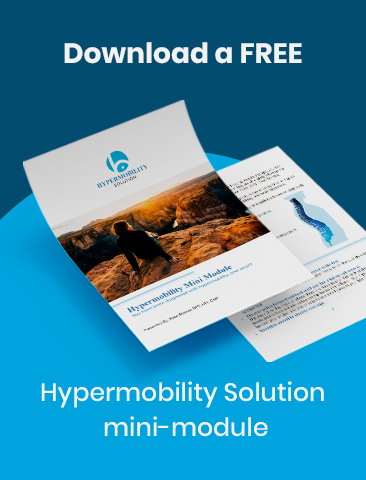
About Kate

Kate Skinner is a Doctor in Physical Therapy, co-founder of Great Divide Physical Therapy, and creator of Hypermobility Solution.
Recent Posts


